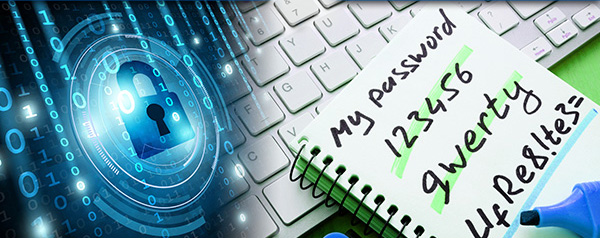
According to the 2017 Verizon Data Breach Investigations Report, 81% of hacking-related breaches leveraged passwords that were stolen, weak, or both. Weak passwords often occur because people find it time-consuming and difficult to maintain multiple passwords. The pitfall in reusing the same password is that if the hacker guesses it, he or she then has access to every site or application associated with it.
Most people use passwords for both work and home computing, making them vulnerable on both ends. A password manager helps you keep hacking at bay by storing your passwords either locally or remotely through an encrypted database. By using a password manager, you save yourself the headache of remembering multiple passwords because you generate and remember one "master” password. This master password becomes your key to unlocking and accessing multiple passwords.
While you may assume that your employer is responsible for your securing your computing environment, this is not the case. In fact, the majority of businesses have policies that enable the employee to create and manage passwords. Most employees have to access multiple secure applications or sites, each having its own set of password rules. Employees must not only create secure passwords that meet requirements, but they need to maintain their access to each respective site.
Employees that reuse passwords or create weak passwords put their company’s data at risk. According to a recent report published by Telesign, over 70% of employees reuse passwords at work. For example, TechCrunch reported that the Dropbox breach that consisted of over 60 million user credentials being stolen was a vulnerability that stemmed from an employee reusing a password at work. It is a critical responsibility for you to protect the data integrity of your employer by creating and using secure passwords. Using a password manager for work is a viable solution to ensure you are doing your part to protect your company data.
Regardless of how you use your home computer and mobile devices, you most likely have sensitive information that you want to protect. Because of the amount of personal and possibly financial information they can attain, cybercriminals hack passwords for social media accounts such as Facebook. Specifically, TechCrunch reported that each day over 600,000 Facebook logins are compromised. Victims who had their login to Facebook compromised faced several issues as cybercriminals gained access to personal and financial information.
Do you have financial data stored on your devices? You may log in to your bank account, do your taxes online, review your 401K account details or even access your payroll information on your personal devices. If you have weak or repeated passwords for these sites, and a hacker cracks your password, they have access to all of it. A password manager ensures you are protecting all of your personal and financial data.
With all of the risks associated with password vulnerability, choosing the best password manager to fit your lifestyle can be a daunting task. With the many tools available to you, familiarize yourself with the available providers and review their respective features. Choosing the right password manager boils down incorporating the benefits that matter the most to you.
Password managers offer several features, but some of the basic features may include the following:
- Auto-fill stored credentials
- Local storage
- Cloud-based storage
These are some basic needs you should account for early-on to help you narrow down which providers to look at next.
Next, you can look at some of the password manager providers that have the basic features you want. You can perform an online search for password manager providers and include basic features to supplement the search. As you review providers, if they don’t offer the basics that you have already decided on, move to the next. Keep a list of potential providers, which may include:
After you have generated a list of 3-5 password manager providers, you can look at them individually to determine if their more advanced features appeal to you.
How do you decide which password manager stands out from the rest? Review their advanced features. For example, does it interest you to have the ability to manage passwords for applications? What about automated password changes? Do you want to share your passwords with other users? These are just a few features that vary in availability and will help you narrow down which password manager solution is right for you.